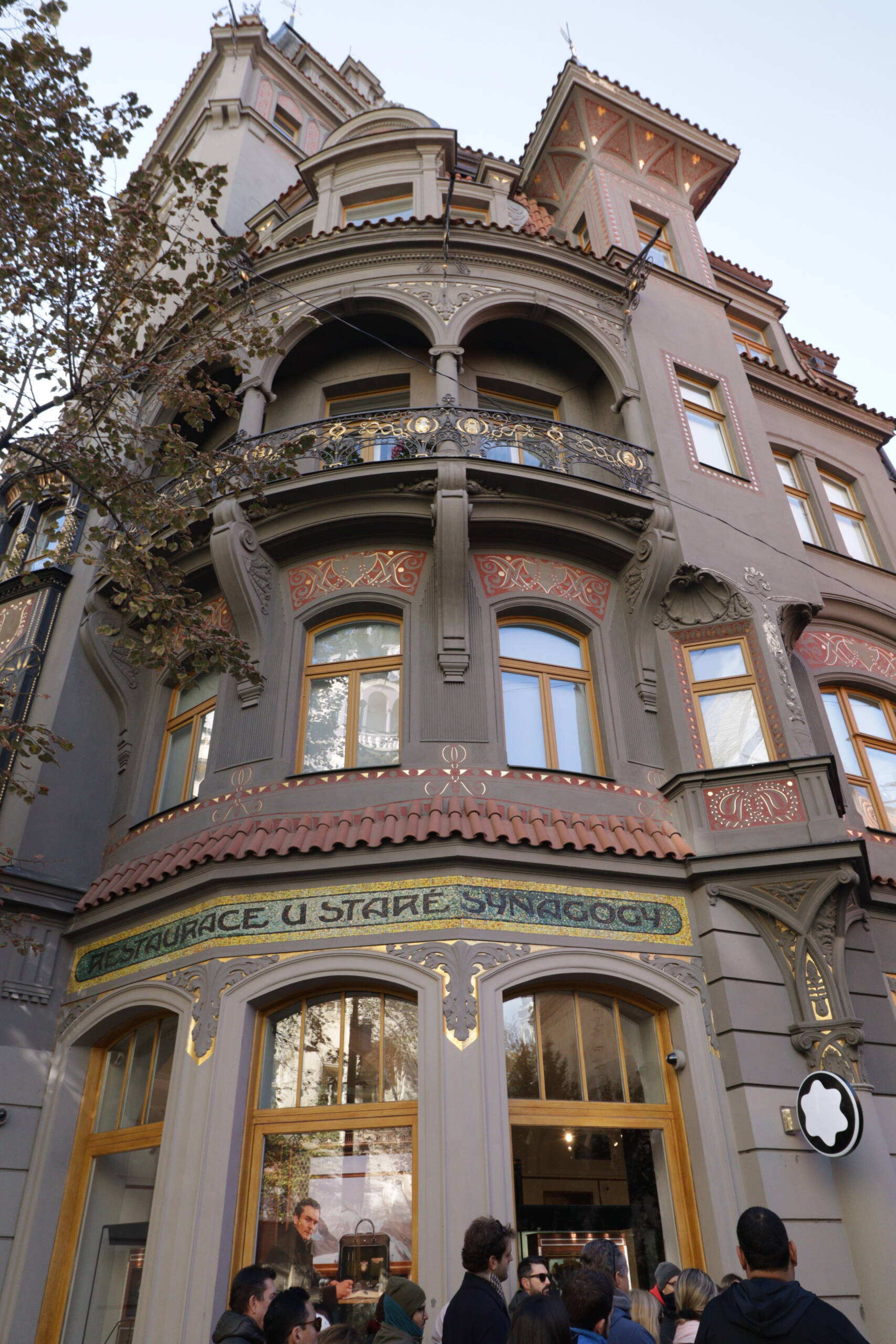The Jewish Quarter in Prague has a particular way of holding its breath. The streets don’t shout; they remember. This building, just by the Old-New Synagogue, appears almost like a guardian of those memories. You stand beneath it and feel layers: Art Nouveau curves and ornamental flourishes, yes, but also the quiet trace of a neighborhood that endured centuries of joy, scholarship, trading, prayer, expulsion, return, loss, survival. The name on the mosaic band — “U Staré Synagogy” — isn’t decoration. It’s geography of identity. It reminds you that you are standing just steps from one of the oldest functioning synagogues in Europe, where prayers have been spoken in continuity since the 13th century. The building seems aware of this, the way a respectful guest might lower their voice.

Looking up, you see warm wooden windows reflecting the narrow street and the people passing below. The iron balconies swirl in careful gold, like someone tried to translate Hebrew calligraphy into metal. The soft grey walls don’t try to overpower anything; they allow the street itself to remain the main character. It’s almost funny how many people queue here without quite noticing that the architecture is speaking — quietly, politely — about the past. The people below, wrapped in coats and scarves, are chatting, taking photos, thinking about coffee or lunch, unaware that the building is part witness, part storyteller.
Josefov is like that. The quarter has been rebuilt and reimagined more than once. Much of what surrounds this facade came after the great urban renewal at the turn of the 20th century, when Art Nouveau visionaries reshaped the district into a modern boulevard quarter. But the memory of the ghetto, of the rabbis, of the cemeteries with gravestones leaning like folded paper, didn’t vanish. They seeped into details. Into names on signs. Into decorative motifs that resemble vines and scrolls and protective symbols. Into the way the buildings never feel entirely carefree, but rather dignified, observant.
Standing there, you feel the city isn’t trying to teach anything or insist on solemnity. It just invites you to slow down long enough to notice where you are. And maybe that’s the beauty of the Jewish Quarter — the idea that history isn’t a museum exhibit behind glass. It’s the street, the stones, the corners of windows, and façades like this one, quietly holding the echoes of prayers, laughter, arguments, and everyday life across hundreds of years.
Leave a Reply